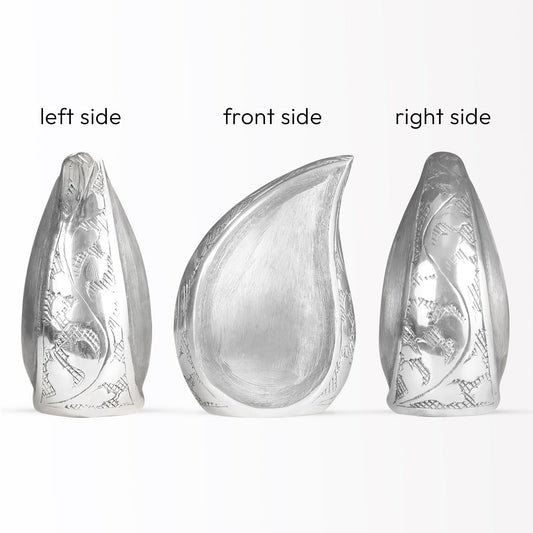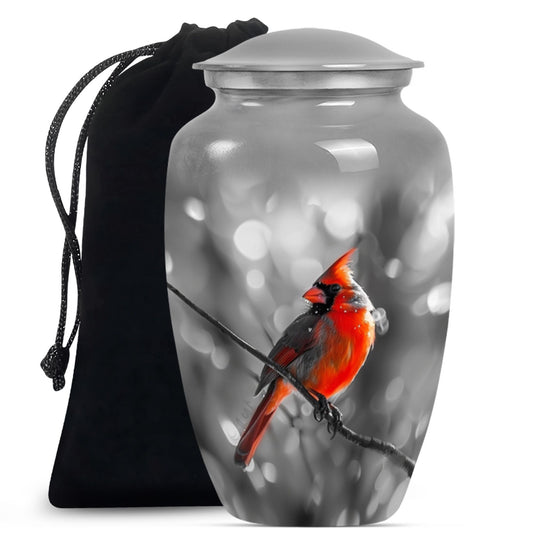Popular Urns
Navigating Pet Loss: How To Support your Child Through Grief

PRACTICAL TIPS FOR HELPING YOUR CHILD COPE:
Children are sensitive creatures and it is our responsibility as individuals to teach them the hard ways of life sometimes. Similarly, we have to address the issue of someone close to them passing away. When anyone beloved to them dies, for example a pet who they are often very attached to, can be a desolating experience for them to deal with.

Pets are our besties who fill life with joy and innocence. Hence, developing emotional bonding with them is common and it can have significant effects on our children’s mental health too.
Therefore, we have prepared this guide for helping your child figure out his/her grief in a more subtle way with proper understanding of the real cause. Do give it a read.
Acknowledging the loss is the first step:

The very first step in the healing journey of your child is to introduce him/her with the actual truth. You can use simple language which he/she can make sense of. For younger children, clear phrases should be used to explain the situation and show them a way out of any kind of confusion and sadness.
Older children can handle little more detailed explanations about the human cycle of birth and death. But do not just let your kid imagine anything randomly, this may further aggravate the loss.
Showing your own grief:

It is very crucial for adults to express their emotions so that children don’t pursue them as some kind of taboo that should not be discussed. It is ok for them to see you sad and grieving the loss of a family member. This will allow them to acknowledge their sadness and will give them a sense that they can do it too.
Now, some children can express their grief in the form of anger as well. It is one of the most common ways to express loss and bereavement. Do not be harsh on them; let them go through it. Though one must look for some signs of depression or anxiety if your child is not able to express themselves properly, It is very much possible that their emotions may fluctuate from time to time.
You can consult a pediatrician if you feel that your child’s symptoms are getting serious and out of your expertise.
Be ready for some questions:

Your child asking you questions is a sign that he or she is ready to confront the situation. Children, like adults, need to express themselves to better understand and process their feelings. Answer their questions so that they don’t feel unheard.
Talking about death can be a hard task, but try simplifying the process for them in the form of a story or a cartoon tale. It will loosen up the dark sides of it. Later, give them some time to process whatever you explained to them.
If your child is not curious enough and does not ask you any questions, then don’t force them; it can be one of their ways to grieve. You just try following their lead.
Creating a pet memorial for closure:
There can be many ways to celebrate your loving friend and cherish their memories with your kid. You can organize a pet memorial for a collective gathering and let your friends and relatives know that you are celebrating your dear pet’s journey. Or you can look for some customizable pet urns and keepsakes to memorialize them forever.

One of our favorite ways is to plant a tree in honor of your pet and let your kid know that this is where his lovely friend will meet him when he grows up. Such stories give your kid hope for a new life that is both sustainable and friendly.
Conclusion:
As we are aware, grieving is a complex process on its own, and hence we can’t expect others to do it in a controlled format. Emotions are something that takes time to evolve, and we, as adults, have to be patient in our children’s journey of bereavement. Accepting the loss and acknowledging it with some additional physical care is the best way to go about it.
ALSO READ :
HOW TO CHOOSE THE RIGHT CREMATION PROVIDER
HISTORY OF CREMATION: From Ancient to Modern Times
How to Transfer Ashes into a Cremation Urn: A Step-by-Step Guide

























































































